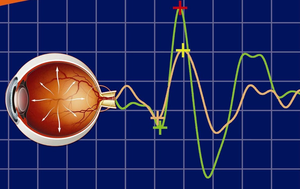Visual evoked potential testing is a type of neurophysiologic study. The test involves placing electrodes on the patient’s scalp. Then, we measure the electric response to a visual stimulus along the optic nerve as the signal travels through the brain.

Clinical functions of visual evoked potential testing include the following
- earlier and more accurate diagnosis of glaucoma
- earlier and more accurate diagnosis of other optic nerve diseases
- earlier and more accurate diagnosis of amblyopia
- assist in the diagnosis and treatment of multiple sclerosis
Visual evoked potential testing may be indicated in the following clinical situations
- glaucoma
- glaucoma suspect
- other optic neuropathy
- multiple sclerosis
- visual disturbances
- intracranial injury
- irregular eye movements
